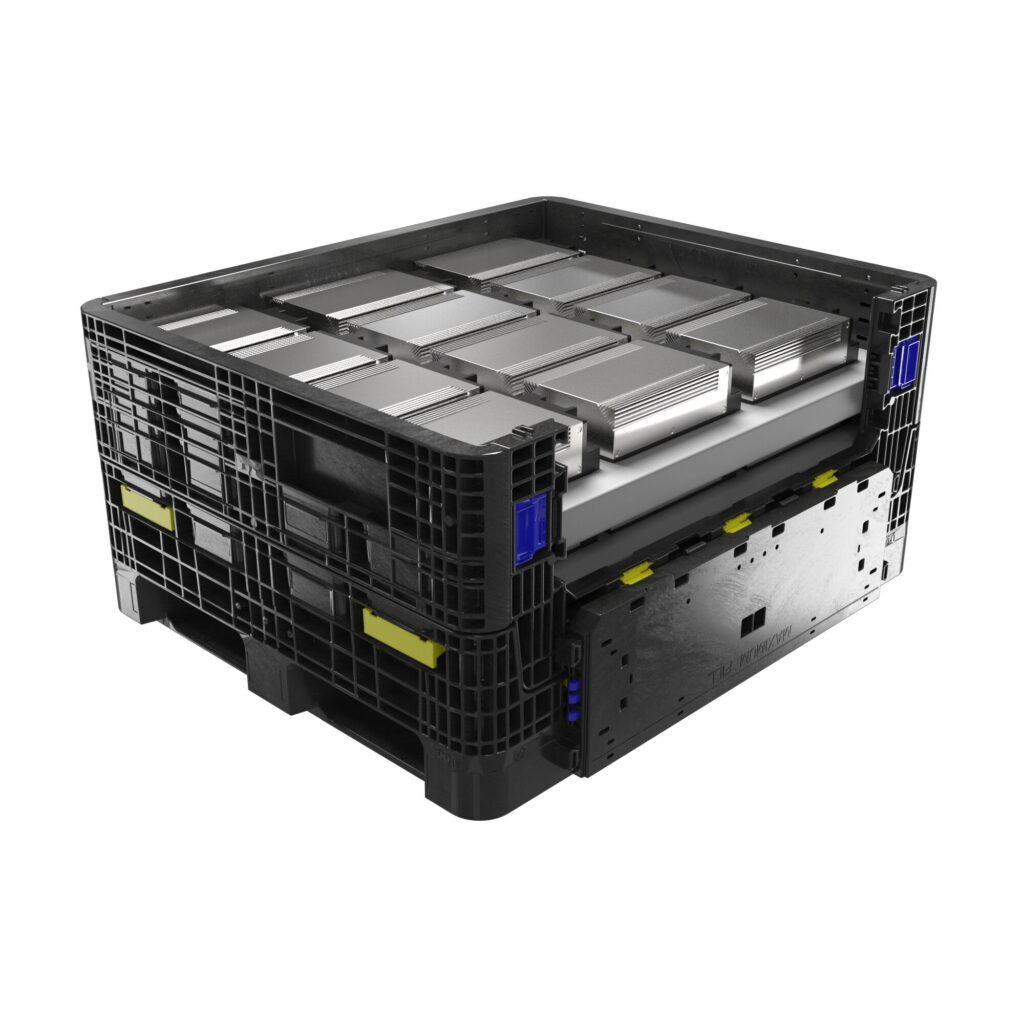Unpackaging the Lithium-ion Battery
Expert: Shane Felix, Strategic Account Manager, ORBIS® Corporation
The future of mobility is here, and it will soon impact every facet of our life – from consumer vehicles and public transportation, to last-mile delivery services and ridesharing. It’s clear that electric vehicles (EVs) are here to stay and so is what powers them – batteries. Forecasts show EV sales in the United States could reach 40% of total passenger car sales by 2030, and more optimistic projections foresee electric vehicle sales surpassing 50% by 2030.
Lithium-ion batteries have become the preferred energy source in this monumental shift in the automotive and transportation industry. As the consumer EV penetration rate in North America continues to increase, it is critical to understand the challenges and nuances associated within the EV supply chain. Batteries have found themselves at the forefront of these challenges due to their high-value, complex regulations, and severe risk they pose during a thermal runaway event.
Lithium-ion batteries are classified as a Class 9 dangerous good. Dangerous goods are any items or substances that, when transported, can pose a risk to health, safety, property or the environment. This classification is why the Pipeline and Hazardous Materials Safety Administration (PHMSA) along with the U.S. Department of Transportation (US DOT) have set aside extensive regulations for the packaging of dangerous goods to maintain the safe transport and storage of these items. Each package is also required to undergo a specific set of performance tests to achieve status of approved for use. These requirements are put in place to ensure the packaging will fully contain the dangerous good when undergoing the stresses and shocks seen in the shipping environment. Batteries are unique as they can act as both the ignition source as well as the fuel for a fire, so failure to comply with these regulations could be catastrophic.

Due to the sudden rise in EV production, battery shippers are under more enforcement scrutiny than ever before, making it imperative to utilize packaging that is not only compliant, but will protect the battery during transport. However, finding the proper packaging and mode of shipment can be a sophisticated and painstaking process. That’s why it’s important to work with a packaging partner that has extensive knowledge of the dangerous goods packaging regulations and is certified with the US DOT to provide packaging solutions for lithium-ion batteries.
Navigating the challenges associated with lithium-ion batteries is just one of the hurdles the automotive supply chain will face with the proliferation of EVs. The entire life cycle will be scrutinized not only by OEMs, but also savvy eco-friendly consumers. With EVs being a greener alternative to the traditional gas-powered car, it’s also paramount that the supply chain reflects the same.
Working with a reusable packaging expert will not only help ensure that dangerous goods regulations are met, but will also drive sustainability at every point in the supply chain with standard products such as totes, pallets and bulk bins, as well as custom solutions like metal racks, trays and dunnage. The durability, reusability and recyclability of these packaging solutions
not only ensure products arrive safely, but they also assist OEMs in driving down costs, achieving sustainability and increasing efficiency in the complicated EV supply chain.

